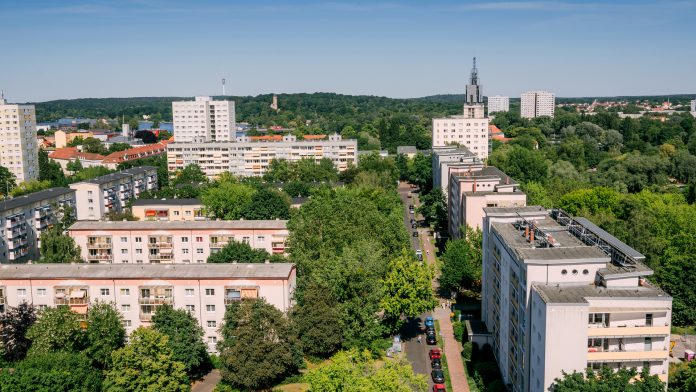A team of researchers from the University of Potsdam (UP), Germany, explored the impacts of additional green structures in cities, such as thermal comfort, biodiversity, carbon storage, and social interaction.
Green spaces in urban areas have a number of encouraging impacts: they are great for our physical and mental health, they are good for the environment, and they can even help fight off the impacts of climate change, contributing towards climate resilience.
How was the relevant data collected?
The scientific research collected is a combination of knowledge from different sectors such as health, ecology, and socio ecological. This broad spectrum portrays how the better scientists know a particular ecosystem; the better people can adapt to climate change.
Pursuing this multi-method approach meant that researchers could compare four green residential courtyards in Potsdam, utilising both local climate measurements, and habitat and tree mapping. Although the observed spaces were similarly built, they had different tree and shrub populations, as well as different ratios and sizes of features, such as lawns and flowerbeds.
What conclusions were reached upon the analysis of collected data?
Katja Schmidt and Ariane Walz, both of UP, observed both that even small differences in the green structure affected the provision of benefits, and the greener courtyards yielded more benefits. Trees have the vital ability to cool down the environment and enhance thermal comfort; the researchers reported additional cooling effects of up to 11°C in the greener backyards.
This means that residential green structures (or green backyards) can be significantly beneficial for human health during summertime heat, when asphalt and buildings make hot days even hotter. Considering the ageing demographic and the expected surge of heatwaves in the area, this is likely to have even greater health implications during the coming years.
What does this mean in regards to the environment?
Green backyards in urban areas are considered an important factor in carbon storage, as urban soils and trees have the capacity to act as a sink for atmospheric carbon dioxide.
Therefore, logically, the yards with more trees have the ability to store higher amounts of carbon. This is where ‘proper maintenance’ is considered to be important, as when yards are managed sustainably, the trees live longer and can continue to store carbon.
“Considering the trend of increasing quantity and magnitude of extreme weather events and the vulnerability of urban areas, green spaces are known to provide great potential to increase urban climate resilience. Our work highlights the widespread positive effects of additional green structures in residential open spaces, a type of urban green space that is frequently understudied,” explained Dr Schmidt.
The research team concluded that if landowners and leaseholders receive proper incentives to commit to climate adaptation, and neighbourhoods come up with deliberate management strategies, these advantages could be further enhanced, contributing to a more sustainable urban development.









